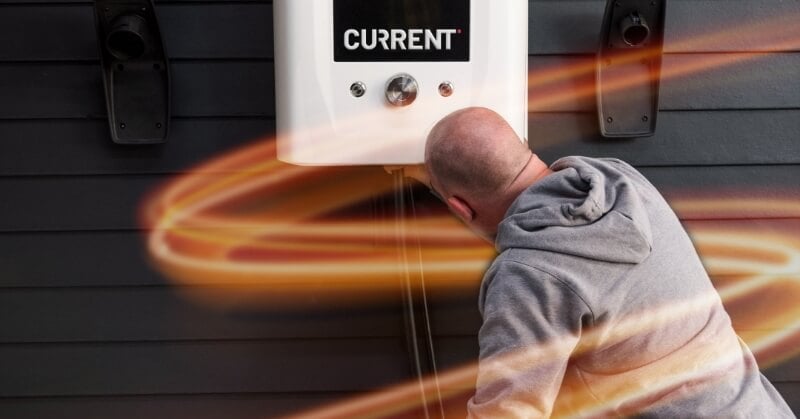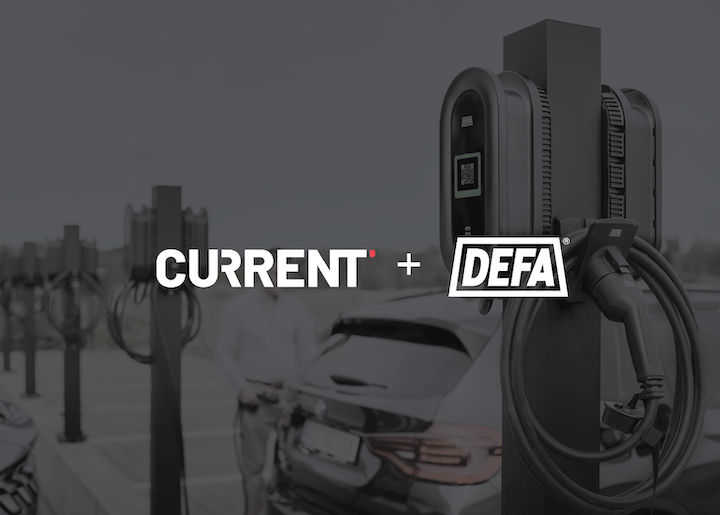
As an installer, you don’t want to be called out on unprofitable service assignments, so it’s important to be smart when designing a new charging system.
Industrial network equipment provides reliable and efficient operation
Foremost, choose solid network equipment that can handle the stresses that charging stations require. Regular consumer-grade equipment from Clas Ohlson or Jula, for example, will not be sufficient for a charging facility. We recommend that you only use industrial network equipment when setting up a facility. This ensures reliable operation and reduces the risk of errors.
How to choose network technology
Once you have selected suitable network equipment, the next step is to choose the right network technology. There are different methods and each has its own advantages and disadvantages. We’ll go into this in more detail, but remember that all our advice is general. It is therefore important to follow the manufacturer’s recommendations to ensure optimal performance.
The dangers of choosing daisy chain connections and wireless technology
It is important to be aware of the risks associated with daisy chain connections. Long rows of connected devices increase the chance of failure at the center point, which will lead to loss of communication with all devices. This means that the more devices you connect on a daisy chain, the greater the chance of the entire system going down for counting. If you choose to use wireless technology, it is important that you measure the signal strength to ensure reliable communication. Remember: the size of the vehicles parked at the site can affect the signal strength enough to create critical system failures.
Wired Network: Quality assurance is the key
A wired network is the safest option, but it requires you to choose the right equipment. High-quality cables are essential. It’s important to use both shielded terminations and cables to minimize noise from the power line. Otherwise, this will create faults in the system and lead to unwanted service calls. Remember: the distance between equipment is also an important factor. Make sure the distances are in accordance with current standards to ensure stable communication. Avoid using daisy chains and running cables close to power cables or areas with a lot of movement or temperature fluctuations.
The potential pitfalls when choosing Power Line Communication (PLC)
For those choosing Power Line Communication (PLC), it is important to know that signals sent through the power line can be perceived as noise. This can cause reduced charging speed or even a complete stop of all charging. Thorough testing and configuration in accordance with the supplier’s recommendations are necessary to avoid such problems.
Network installation for optimal charging station performance
To ensure reliable and efficient operation of charging stations, thorough planning and proper network installation are essential. By choosing industrial network equipment, following manufacturers’ recommendations and being aware of the risks of different connection methods, you can help create a reliable charging infrastructure.
Tips for Design and Long-term Operation
When taking on designing a charging facility, it’s essential to plan for future expansion. Choose a cable size that is larger than necessary, as this provides flexibility for future expansion. Remember to keep the load on both the fuse and cable to a maximum of 80%. This is a critical factor in ensuring a reliable charging solution.
Standard compliance and distance limitations
It is important to be aware of standards and distance limitations when designing a charging system. The distance from the fuse box to the furthest point must not exceed the standard to ensure optimal performance. This ensures that electrical signals and power delivery maintain quality and safety in accordance with industry guidelines.
Follow the OCPP standard and emphasize Quality
When you choose hardware on behalf of the charging facility’s users, make sure that the charging box supports the desired functionality. Check which modules are supported to avoid discrepancies between expectations and reality. We recommended that you follow the OCPP standard and choose compatible charge points. Remember, as an installer, you have to satisfy the customer’s needs. An investment in quality products may seem expensive, but will prevent major expenses later on. The simple fact is that choosing quality pays off, especially during annual service checks that the customer pays for.
Long-term perspective: Aftermarket and Documentation
A charging system has an expected lifespan of over five years. Therefore, it is crucial to take a long-term approach when planning and implementing the project. It may be wise to secure the aftermarket already during the design phase. That way, the quality of the installation is maintained for many years. It is therefore important to have thorough documentation of the charging system, which simplifies project management and subsequent service. This ensures that the system functions optimally throughout its entire lifespan.
Service agreements
To ensure smooth operation and easy expansion of the charging system, we recommend you sell service agreements during the design phase. Introducing service agreements from the outset gives the site owner continuous follow-up of the charging facility, which can help identify and resolve potential issues before they affect performance. This saves the customer a lot of headaches later on. Plus, it provides a stable income for the installer for many years to come. If you’re a CURRENT partner, we can bake the service agreement into the subscription price the site owner pays. This makes it a clear and natural part of owning a charging station.
The importance of choosing a Smart Charging system
As the need for load management increases, it is crucial to choose charging stations that support smart charging through cloud services or local devices. This enables dynamic charging, prevents overloading of main fuses and optimizes charging times to save money per kilowatt hour. CURRENT’s automated system offers flexibility and you can choose from everything from power prioritization to cost minimization. This ensures that the charging system can be adapted as needed.
Future-proofing through the right equipment
For installers and project managers, it’s important to understand the customer’s needs and choose equipment that both meets current requirements and enables future upgrades. Digital adjustment of charging functions provides flexibility, and we recommend you choose higher amperage and power capacity to be prepared for future needs. This provides a scalable solution and reduces the need for significant changes or upgrades in the future.
Good documentation should contain everything you need
Documentation is essential to ensure a reliable charging facility. From fixed IP address assignment to daisy chain connections and phase rotation, documentation provides an overview and enables hassle-free troubleshooting. This ensures easy component replacement without the risk of complications and is crucial for maintaining the system.
Åsmund Møll Frengstad’s ideal installation
Åsmund Møll Frengstad, founder of CURRENT and contributor to several EU projects related to electrification, has spent a lot of time finding the optimal installation. Here’s how he would design the installation: “If I were to install chargers myself, I would choose an industrial router that could have a VPN tunnel in, so I can communicate both with OCPP and with WLAN, with a fallback on SIM cards. I would choose as big cables as I can, in relation to what’s available, so I’m sure I wouldn’t have to rewire the cables. I would, as far as possible, choose to go for Ethernet cables, CAT6 shielded termination and shielded cable, and I would set up a system with star instead of daisy-chain. If I have to daisy-chain, I would never go over three charging stations in a chain.”



